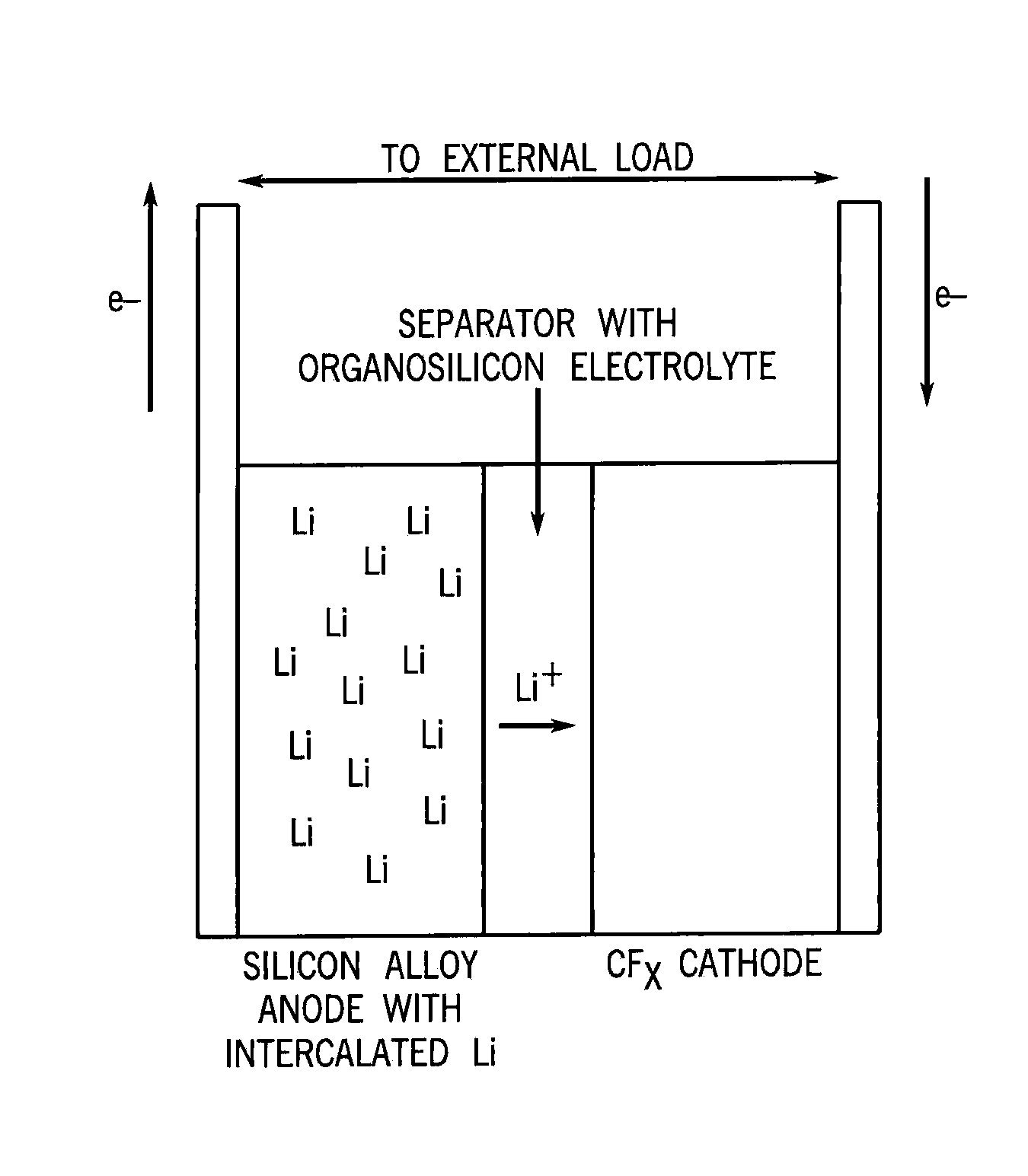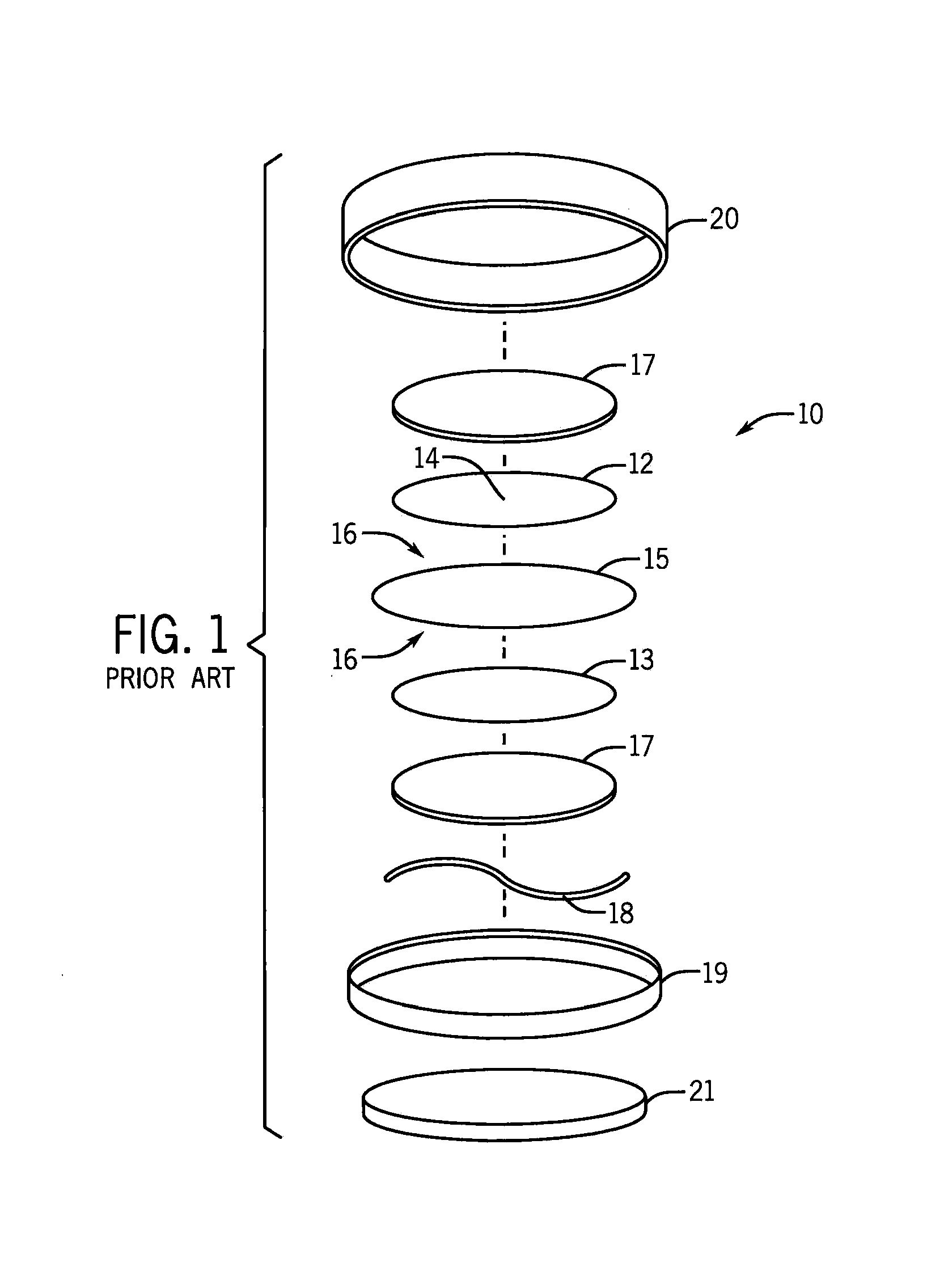High-Temperature Resistant Carbon Monofluoride Batteries Having Lithiated Anode
a technology of carbon monofluoride and anode, which is applied in the direction of secondary cell servicing/maintenance, non-aqueous electrolyte cells, cell components, etc., can solve the problems of not being suited for long-term use, exposing the device to geothermal heating extremes, and military devices can be exposed to explosion-generated heat, etc., to reduce the degrading chemical reactivity, reduce the risk of explosion, and be reliable for long-term us
- Summary
- Abstract
- Description
- Claims
- Application Information
AI Technical Summary
Benefits of technology
Problems solved by technology
Method used
Image
Examples
Embodiment Construction
[0043]Described in detail below are batteries suitable for use at highly elevated temperatures. They have an anode based on Si with lithium intercalated into this base material. It is alternatively proposed to use lithiated Si alloy anodes (e.g. lithiated Si / Sn), and / or lithiated Ge anodes, or lithiated Sn anodes.
[0044]As shown in FIG. 2, a lithiated silicon anode can be coupled to a carbon monofluoride cathode, and a suitable electrolyte can be provided. On the right is the carbon monofluoride cathode, and in the center is the electrolyte that is impregnated into a “separator” that prevents physical contact of the anode and cathode while allowing Li+ ions to be transported between them via a liquid electrolyte.
[0045]In one application of our invention a FIG. 1 type device can have its standard electrolyte replaced with a selected electrolyte solvent (e.g. tetraglyme, polypropylene carbonate, or selected high temperature resistant organosilicons are preferred). It is projected that ...
PUM
 Login to View More
Login to View More Abstract
Description
Claims
Application Information
 Login to View More
Login to View More - R&D
- Intellectual Property
- Life Sciences
- Materials
- Tech Scout
- Unparalleled Data Quality
- Higher Quality Content
- 60% Fewer Hallucinations
Browse by: Latest US Patents, China's latest patents, Technical Efficacy Thesaurus, Application Domain, Technology Topic, Popular Technical Reports.
© 2025 PatSnap. All rights reserved.Legal|Privacy policy|Modern Slavery Act Transparency Statement|Sitemap|About US| Contact US: help@patsnap.com



